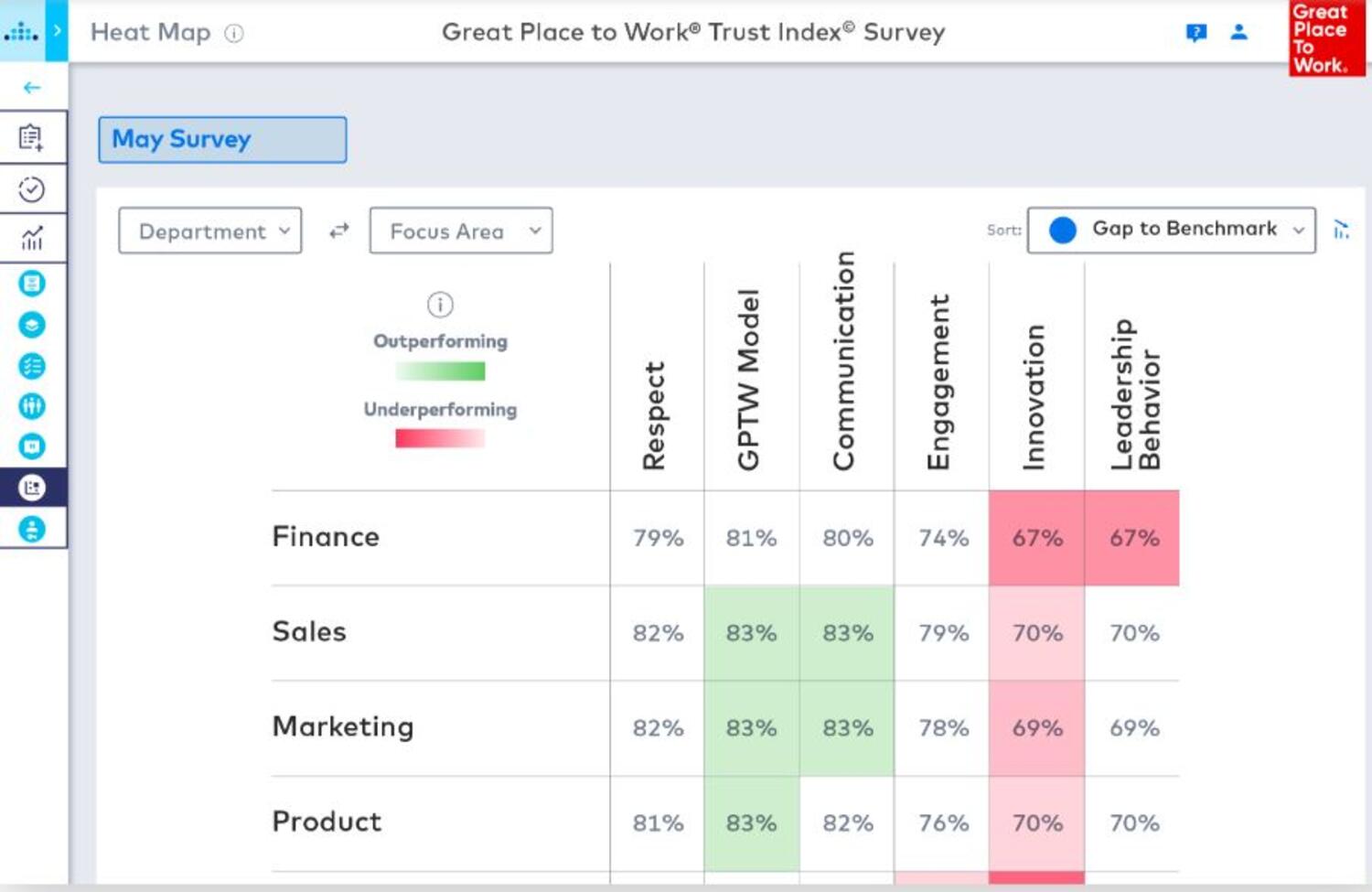Employee Experience, Employee Surveys, Post-survey
Many Great Place To Work-Certified™ companies know they have created a strong company culture, but they want to know how they can go further to earning a spot on one of our Best Workplaces™ lists.
When we were advising these companies, we found three key drivers of success embedded in their Trust Index™ employee survey results.
Acting on these areas can help create the fastest improvements in your culture, which will likely be reflected in your employee survey scores:
1. Close experience gaps
When HR managers consider employee survey results at a high level, they often look at overall scores, which are calculated by adding up every employees’ response and taking an average. However, what an average can hide is that different groups of people can have drastically different experiences at work.
If you only look at averages, an organization where male employees score 90% and female employees score 50% looks the same as an organization where everyone scores 70%. But the first organization obviously has some serious issues to address.
While a gap this extreme is rare, nearly every organization has some gaps in experience. There are two reasons to identify these gaps and to close them.
Raising the scores of your more marginalized groups will raise your average, but it will also improve the experience of all employees, not just the ones in the marginalized groups. Organizations that are diverse, inclusive and equitable perform better and have better workplace cultures than those that are not.
Creating an experience that’s equal for everyone is so crucial that consistency of experience across demographic groups is one of the most important criteria that determine who makes our Best Workplaces lists.
When we say an organization is one of the best places to work, we mean that it offers a world-class experience to everyone who works there, not just some or most people. Organizations with higher overall scores can and do lose list positions to organizations with more consistency.
When you look at your results, consider which groups of employees – big or small – are having a less positive experience. Why are some groups' experience less positive than others?
2. Identify and lean into your strengths
Humans experience something that psychologists call the “negativity bias." It causes us to assign more weight to negative things than positive ones. It may be because of this bias that when looking at survey results, leaders will often spend most of their time on the areas where their scores are lower. While it’s certainly important to look at those opportunity areas, it’s equally important to focus on your strengths.
The best companies don’t just do everything kind of well. They have unique areas of strength that make them stand out from the competition. Look for the things that make your organization special and try to emphasize them.
For example, maybe your organization prides itself on being innovative, and you have the survey results to back it up. Instead of resting on your laurels, look for even more ways to innovate. You already have a recipe for success, so it’s just a matter of leaning in rather than starting from scratch.
Information on your areas of strength may not come directly from the survey. Your company’s values can often tell you what your strengths are, or should be. For example, if your organization values cooperation and your scores on this are good, but not exceptional, you have an area to leverage. For another organization, good scores on cooperation might be enough, but because it’s special to you, it’s worth focusing on.
Try to think of the three things you would like employees to say when they describe why your organization is special. Do your survey results reflect the experience you want your employees to have in those areas?
3. Understand cause and effect
No part of the employee experience happens in a vacuum. If an employee feels that their manager doesn’t take an interest in them, for example, that lack of personal connection might make the employee feel like they’re being passed over for promotions or raises.
If we only looked at the feedback on how employees perceive promotions and not how they perceive managements’ interest in them as people, we might focus too narrowly and miss the forest for the trees.
It’s important to take a holistic view to understand how different parts of the employee experience connect to one another.
Some parts of the employee experience tend to have more of these connections than others. If management doesn’t communicate well, for example, it’s generally hard to get much of anything done.
Personal relationships also tend to have strong effects on overall experience: If an employee doesn’t feel that their manager is honest, relatable, or caring, they will interpret all of their manager’s actions in a less positive light.
Understanding the connections between different parts of the employee experience can help guide your decision-making when you’re action planning. If you want to improve scores in a specific area, but you identify something that’s getting in the way a positive experience, you should be focusing on the root cause, not the symptom.
Areas with lots of connections to other experiences, like communication, can also be higher impact – it is better to focus on such areas because your efforts will yield greater improvements overall.
When you look at your results, do you see common threads that might connect your opportunity areas? Can you identify one or two areas that, if addressed, would help in many others?
Ready to move the needle?
If you’re not already using the Great Place To Work survey, reach out to us to learn about how we can help you improve employee engagement and become eligible for one of our Best Workplaces lists. If you are ready to be recognized for your strong company culture, apply to get on a Best Workplaces list.











